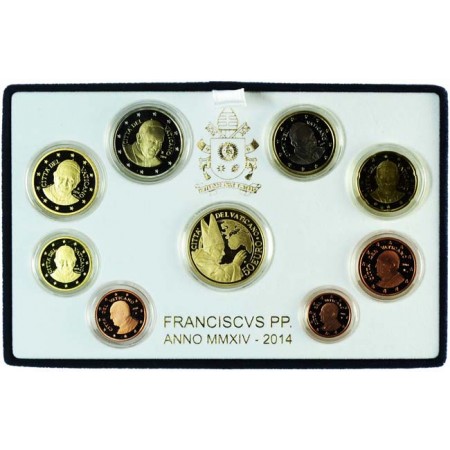![Mincovna Italská mincovna]()
Istituto Poligrafico e Zecca dello Stato. 2016.
There were other cities or regions to which the popes granted a mint for limited periods of time, as Ancona (from Sixtus IV to Pius VI), Aquila (1486, when that city rebelled against king Ferdinand I of Naples and gave its allegiance to Innocent VIII; its coins, which are very rare, bear the inscription AQUILANA LIBERTAS), Ascoli (from Martin V to Pius VI), Avignon (from Clement V on), Carpentras (under Clement VIII), Venaissin (near Avignon; from Boniface VIII), Fabriano (under Leo X), Fano (from Innocent VIII to Clement VIII), Fermo (from Boniface IX, 1390, to Leo X), the Marches (around Ancona; from Boniface IX to Gregory XIII), Macerata (from Boniface IX to Gregory XIV), Modena (under Leo X and Clement VII), Montalto (under Sixtus V), Orvieto (under Julius II), the "Patrimony" (from Benedict XI to Benedict XII), Perugia (from Julius II to Julius III), Ravenna (from Leo X to Paul III and under Benedict XIV), Recanati (under Nicholas V), Reggio (from Julius II to Adrian VI), Spoleto city (under Paul II), the Duchy of Spoleto, PROVINCIÆ DUCATUS (under Paul V), Viterbo (under Urban VI and Sixtus IV).
From 1931, the coins of Vatican City have been struck at the Italian State Mint in Rome (there are also coins dated 1929 and 1930, which were struck in 1931 and backdated accordingly), and are legal tender in both Italy and San Marino, in addition to the Holy See. Initially, coins were produced in the denominations of 5 and 10 Centesimi (in bronze), 20 and 50 Centesimi, and 1 and 2 Lire in nickel, 5 and 10 Lire in silver, and 100 Lire in gold. All popes since Pius XI have had coin issues, including the brief reign of John Paul I, which is represented by a 1000-Lire silver piece struck posthumously.
As the value of the Italian Lira declined in the years since World War II, new denominations in progressively higher values were introduced, with the lower values dropping off. All the centesimi denominations ceased to be issued after 1946, the gold 100-Lire after 1959, and the by-now tiny aluminum 1- and 2-Lire issues ended after 1977, with the 5-Lire disappearing a year later.
Before the Lira was replaced by the euro in 2002, issues for John Paul II included a 10-Lire piece in aluminum, a 20-Lire piece in an aluminum-bronze alloy, 50-Lire and 100-Lire pieces in copper-nickel, a 200-Lire coin in aluminum-bronze, and ringed, bimetallic 500- and 1000-Lire pieces for circulation and in the annual sets. Additionally, commemorative 500- and 1000-Lire pieces were struck in silver, as were 10,000-Lire pieces struck since 1995 for the upcoming Holy Year. Series of two gold coin issues, in the values of 50,000 Lire (.917 Gold, 0.2211 AGW/6.87g, 7.5g total weight) and 100,000 Lire (.917 Gold, 0.4422 AGW/13.74g, 15g total weight), were also struck in connection with Holy Year 2000. These were minted from 1996 to 2000.
Agreements with the European Union allowed the Holy See to switch to euro coinage when Italy did in 2002, even though Vatican City is not a member state of the European Union. Current issues include 1, 2, 5, 10, 20, 50 cent and 1 and 2 euro denominations, in addition to commemorative coins of 5 and 10 euro in silver, as well as 20 and 50 euro in gold.
![Istituto Poligrafico e Zecca dello Stato. Mincovna]()
Původní palác italské mincovny.





